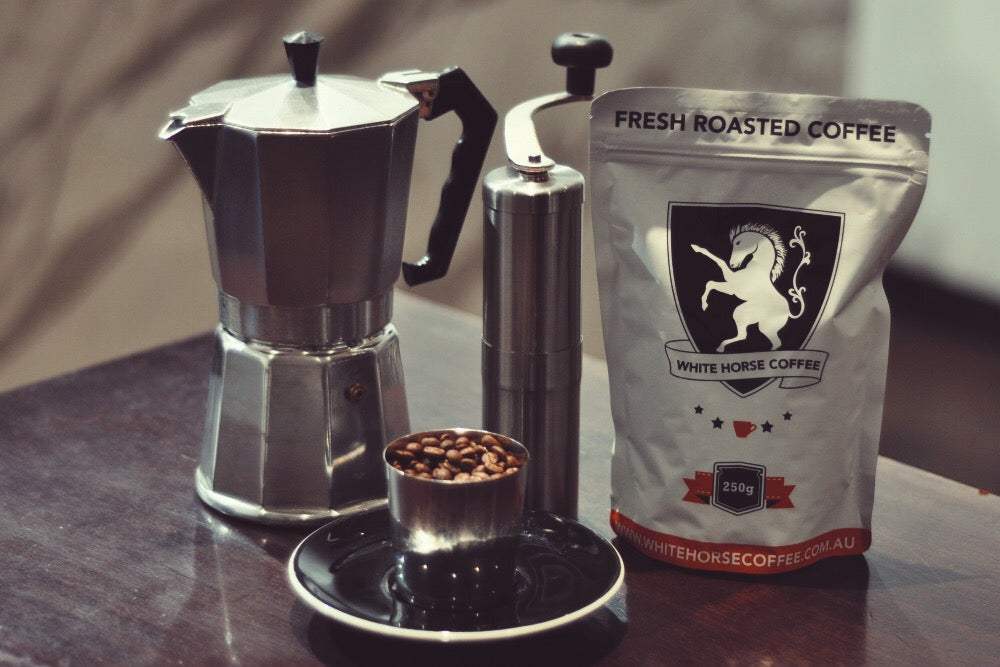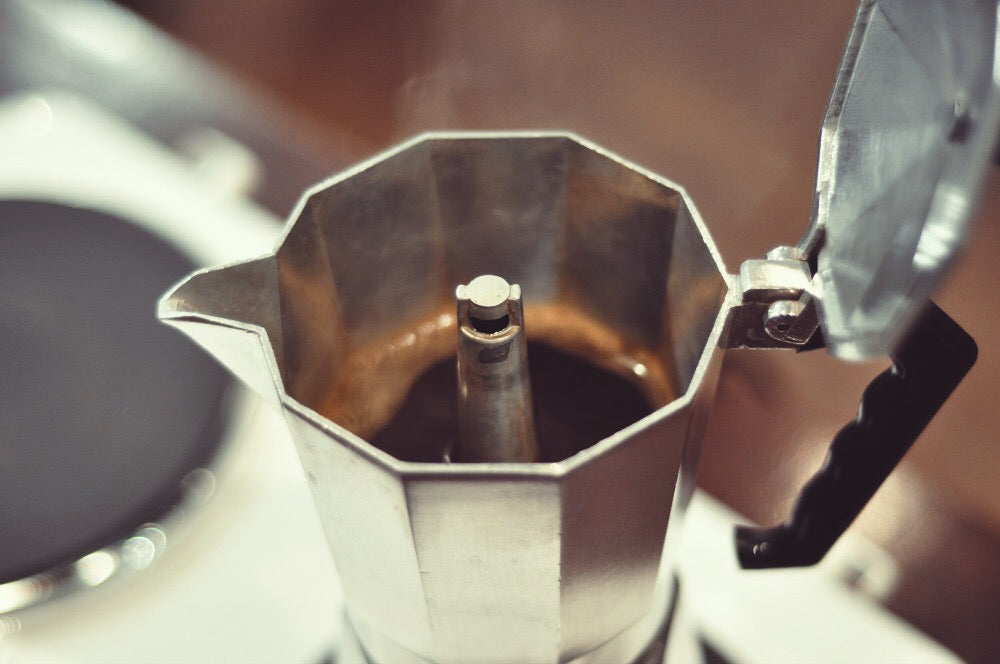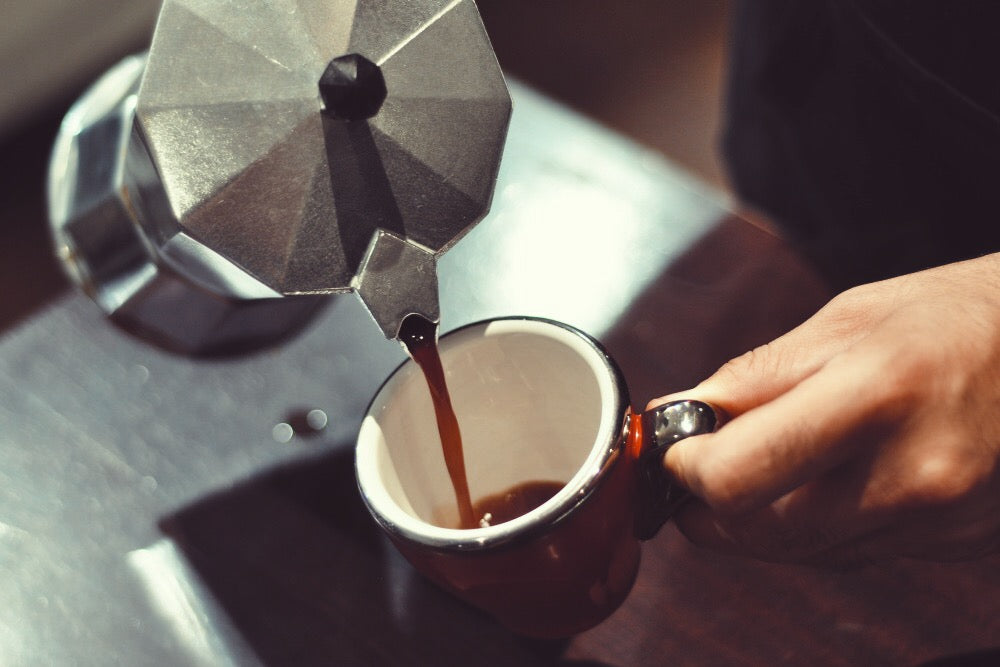If you've been following our articles about brewing coffee at home, you will know that we love to brew in different ways ... some traditional, some not so. We wanted to write about all these interesting ways to brew coffee, as a way to tempt you to follow us into the world of alternative specialty coffee brewing. It really is a lot of fun and extremely rewarding. Coffee is wonderfully flexible and organic, and responds well to being brewed in different ways. And by experimenting with different methods we get to experience the wonderful depth and breadth coffee has to offer. This time we want to go back to an old but trusty method in brewing delicious coffee, the Stovetop Moka Pot.
Let's start with coffee to water ratios
We want to mix it up a little and provide you with two variations, one for a traditional espresso-like brew, and one for a smoother, rounded flavour. Please note we have tested these ratios with Bialetti Stovetop Moka Pot Brewers. Regardless of the style you choose to brew “traditional” or “specialty” the method below is the same.
Specialty Brew Ratios
With this approach, the resulting cup is round and smooth and gives you the ability to brew filter coffee, origin espresso, and even our white knight house blend. Here you will experience the full range of flavours from the blend showcasing a balanced cup as being a prized characteristic.
| Stovetop Size |
Water Measure (ml) |
Coffee Weight (gm) |
| 1 Cup (2oz) |
60 |
4 |
| 3 Cup (6.5oz) |
200 |
12 |
| 6 Cup (10oz) |
300 |
18 |
| 9 Cup (18.5oz |
550 |
33 |
| 12 Cup (25oz) |
775 |
47 |
- Note: The specialty scale works on a standard ratio of 6g of coffee to 100ml of water.
- Tip: Add or subtract 1g of coffee (per 100ml of water) to adjust strength.
Traditional Brew Ratios
This brew is much stronger, more like the strength of espresso brewed coffee, hence the name stovetop espresso. The flavours experienced are more akin to espresso, being intense and concentrated.
| Stovetop Size |
Water Measure (ml) |
Coffee Weight (gm) |
| 1 Cup (2oz) |
60 |
8 |
| 3 Cup (6.5oz) |
200 |
26 |
| 6 Cup (10oz) |
300 |
40 |
| 9 Cup (18.5oz |
550 |
72 |
| 12 Cup (25oz) |
775 |
100 |
- Note: Traditional brewing works on a much higher ratio of coffee to water, almost 13g/100ml.
-
Fact: Weighing heated water is a great way to achieve accurate brewing ratios. 100g of heated water is approximately 100ml. The difference is tiny, so in this guide we assume 100g = 100ml of water.
Here’s what you’ll need.

- Fresh coffee beans (grab some here)
- Stovetop Moka Pot Brewer (buy a Bialetti Pot here)
- Grinder (you can get one here)
- Scales
Step 1
Check the gasket to ensure it is in good condition. Replace if necessary. Boil a kettle to preheat the water.

Step 2
Weigh the beans (refer to above scale) and grind slightly coarser than for espresso.
- If you are using an electronic grinder it will be in between your espresso and paper filter grind size.
- The hand mill is great for stovetop. Here how I adjust my grind. Adjust your mill to make the blades touch, then screw three clicks back.
- Adjust 1 click finer or coarser for your own taste.


Step 3
Pour boiling water from the kettle into the Moka Pot base. Fill to just below the pressure valve.
- Consult the table above for accurate brewing ratios.

Step-4
Add ground coffee to the basket. The basket will be approximately half full. Tap the side to ensure the basket is evenly dosed. If you have a round jar you can press the coffee down.
-
I use the base of my hand-mill to act as a tamper for pressing the ground coffee, a light press is more than sufficient to ensure that all grounds are extracted.
Screw the top onto the brewer and keep upright. Use a cloth to handle the brewer, as it will be hot.


Step 5
Put the brewer on the stove using a medium heat. When the coffee stops flowing into the upper part of the pot, remove from heat. Pour and serve.

 ENJOY!
ENJOY!
Get the gear
Buy all the gear you need here. Dom






















Leave a comment